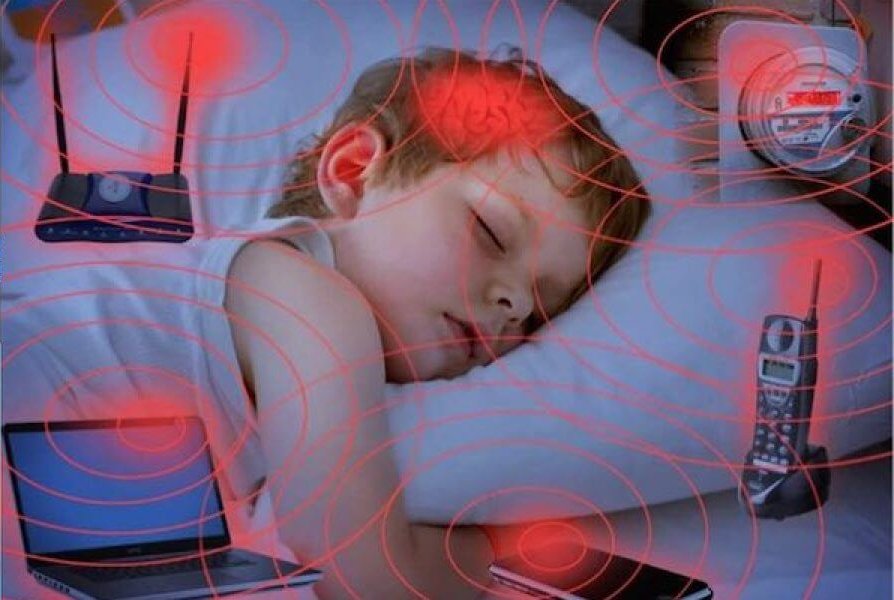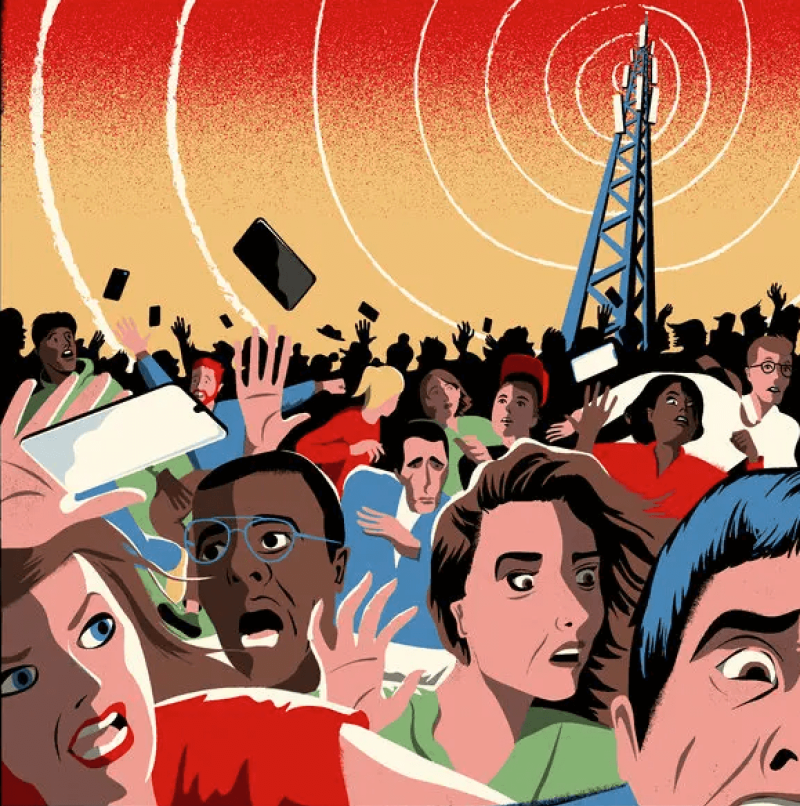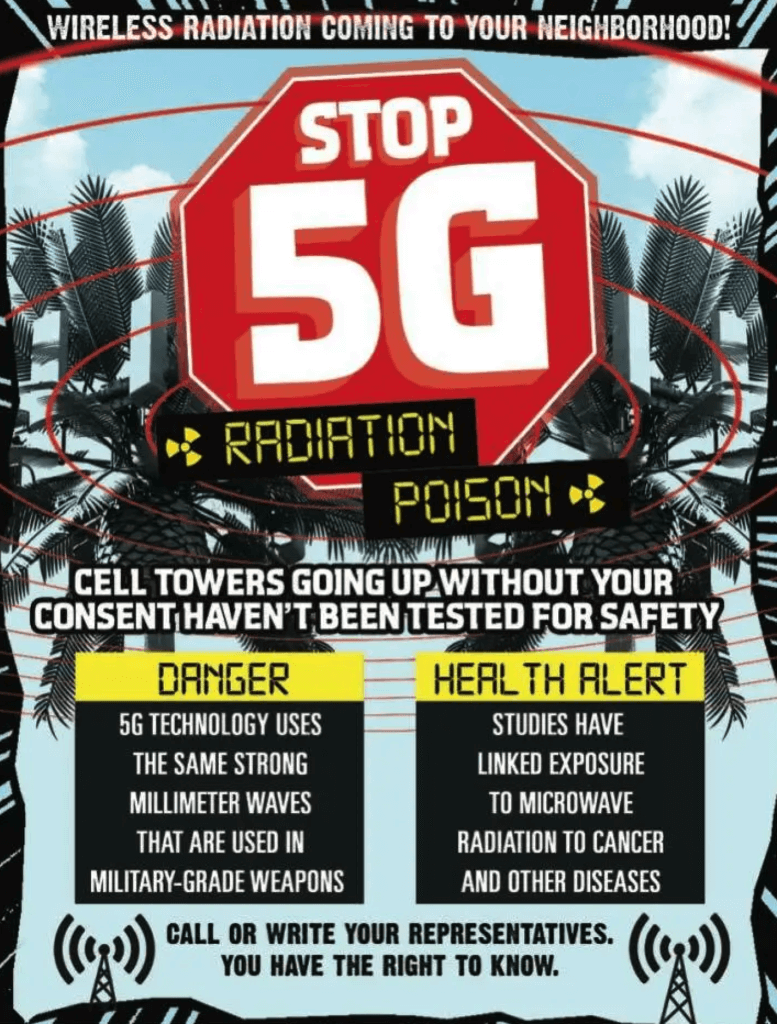Let’s separate the science from the hysteria.
The bills come in response to lobbying by the group Americans for Responsible Technology, and couch the issue in terms articulated by the group’s director, Doug Wood, on its website.

“We reject the rush to roll out 5G technology across America.
This effort is based on outdated science. It is unwarranted and dangerous, eviscerates local control and places the interests of a single industry ahead of those of the American people.
We call on our representatives in Washington to heed the call of independent scientists, medical professionals and public health experts around the world who are warning of the dangers of this technology, and to reject any proposal to use public funds or public property to facilitate the deployment of expanded wireless networks.”
But, while the New York State initiative focuses on the potential health threat posed by the new technology, it ignores key questions about how we evaluate risks, how much we can trust the science, and what level of certainty is acceptable.
We have been here before. In the 1980s and 1990s, we were concerned with extremely low-frequency electromagnetic fields (ELF-EMF) from power lines and household wiring and appliances. Starting in the early 1990s, radiofrequency (RF)/microwave emissions from cell phones and their base stations took center stage, and were given currency by a 2011 report from the International Agency for Research on Cancer (IARC). Thousands of peer-reviewed articles were published on the health effects of ELF-EMF and RF, but, after decades of research, there is no convincing evidence of adverse health effects from these types of fields.

The first thing to note about the New York State bills is that, while they mention “wireless radiation,” they fail to make the fundamental distinction between ionizing radiation, from such sources as X-rays and gamma rays, and non-ionizing radiation. The former is characterized by very high frequencies – and, hence, very high energies – that are capable of damaging molecules in human cells and initiating cancer. The latter carries energies that are many thousands of times weaker.
Use of the word “radiation” conjures up fears which immediately put the discussion on the wrong footing. A recent review paper from the IEEE Committee on Man and Radiation (COMAR) in the journal Health Physics does a superb job of outlining in clear language what 5G wireless networks are, how they operate, what is known about possible adverse health effects, and how exposure limits set by international organizations address possible health effects. Below, I list some of the key points made in that paper:
- The earlier 2-4G cellular technology, which made use of antennae mounted on very tall masts, covered relatively large areas — up to several kilometers – divided into “cells,” but could accommodate only a small volume of simultaneous phone and data traffic. Hence the need for a system that could meet the demand for vastly increased volume of streaming data and voice communications.
- 5G antennae operate over a much shorter distance, requiring that “air space” has to be divided up into much smaller cells, with antennae placed on buildings and on utility poles. This is referred to densification of cells. In order to accommodate the greatly increased volume of information, 5G will operate across the RF spectrum, including a “low band” below 1 gigahertz for voice and support for the “Internet of Things,” a “middle band” in the 1-6 gigahertz range, and a “high band” of ~30-300 gigahertz in the millimeter wave (MMW) range with wavelengths from 100 millimeters to 1 millimeter, which can support very high data transfer rates. It is this new “high band,” which has not been previously used for wireless communications, that is the focus of most of the concern about possible adverse health effects of 5G wireless networks.
- While permitting transmissions across very large bandwidths at higher frequencies, MMW are readily absorbed by trees and their foliage and by building materials, necessitating the placement of antennae on the outside of buildings in order to transmit and receive signals.
- Unlike lower frequency fields, the higher frequency millimeter waves do not penetrate beyond the outer skin and, thus, do not expose inner tissues to MMW.
- Current research indicates that overall levels of exposure to RF are unlikely to be significantly altered by 5G, and exposure will continue to originate mostly from the “uplink” signals from the user’s own devices, as they do now.
- Exposure limits in publicly accessible spaces will remain well below exposure limits established by international organizations, including ICNIRP and IEEE.
- As long as exposures remain below established limits, based on decades of research, exposure to 5G fields is unlikely to have any adverse health effects.
- It is acknowledged, however, that research on MMW fields is less extensive than that for lower frequencies. However, it needs to be noted that research in this area is of mixed quality, and attention has to be paid to results that are reproducible.The review paper in Health Physics concludes with the following sentence:
“COMAR concludes that while we acknowledge gaps in the scientific literature, particularly for exposures at millimeter wave frequencies, the likelihood of yet unknown health hazards at exposure levels within current exposure limits is considered to be very low, if they exist at all.” [emphasis added]
In addition to failing to make any of the careful distinctions contained in the review paper, the New York State announcement reveals a profound misunderstanding of probability and degrees of risk. It states that:
“To date, no studies have confirmed claims by the telecom industry that exposure to wireless radiation emitted by 5G wireless devices, as well as earlier generations of wireless technologies, is safe.”
However, as is recognized by agencies like the U.S. Environmental Protection Agency, it is not possible to prove that an exposure is safe. What risk assessment agencies typically do is to use animal – and, where available, human data — to determine a level below which no adverse effects were observed and then to add a safety margin of one-hundred or one-thousand. This approach has been used successfully for decades. Rather than holding out some absolute ideal of “safety,” what needs to be realized is that there are degrees of risk, and the goal is to ensure that any risk is below the level of what we normally accept in everyday life. We accept some degree of risk every time we get in a car, drink a glass of wine, or take a painkiller or prescription drug.
A key problem is that when it comes to a novel technology – especially one that will involve placing thousands of antennae in close proximity to where we live and work — any notion of gradations of risk and of the protection afforded by existing safety standards is replaced by an absolute dichotomy of safe/unsafe. We are programmed to react in terms of absolutes.
The behavioral psychologist Daniel Kahneman described two systems for parsing reality. System 1, which is the default mechanism for making instantaneous decisions involving life or death, uses stark binary terms involving absolutes (safe/unsafe). In contrast, System 2, involves making distinctions and bringing prior knowledge to bear in order to calibrate levels of danger/risk. But System 2 takes mental effort and time for reflection, and this is not the default way we react to a perceived threat.
Politicians and activists know this very well. Any whiff of a possible risk from an agent that we can neither see nor feel, especially if associated with a novel technology, is reacted to as if it is an existential threat.
As the authors of the Health Physics article argue, in view of the wide dissemination of this new technology, high-quality studies should be done to monitor exposure and potential health effects. At the same time, we need to be aware that the scientific literature is replete with papers that purport to show “positive effects,” but many of these studies are never replicated.
In addition, it is often unclear how the results, for example, of tests done on cells in a petri dish apply to an intact organism. Routinely absent from the public discussion is the reality that not all studies are equal – and that studies purporting to show an effect get more attention than studies that fail to find an effect, even if the latter are of superior quality. The claim in the New York State press release referring to “growing evidence” of adverse health effects is almost certainly misleading.
Of course, if those calling for further study of 5G wireless didn’t emphasize the “growing” body of evidence of adverse health effects, they would not be able to mobilize politicians to devote time and resources to studying this issue. That is the bind.
It is noteworthy that a paper published in 2019 examined the quality of 94 studies of millimeter wave effects on cells and organisms. While 80 percent of the in vivo studies and 58 percent of the in vitro studies showed responses to exposure, there was no consistent relationship between power density, exposure duration, or frequency, and exposure effects. The authors concluded that the quality of future studies of MMW needs to be significantly improved.
What we can be sure of is that new studies are in the works and that more will be undertaken. Whether these will do anything to alleviate the fear and uncertainties surrounding 5G technology, which the announcement from Albany contributes to, is far from clear.
Geoffrey Kabat is a cancer epidemiologist and the author, most recently of, Getting Risk Right: Understanding the Science of Elusive Health Risks. Follow Geoffrey on Twitter @geokabat
































